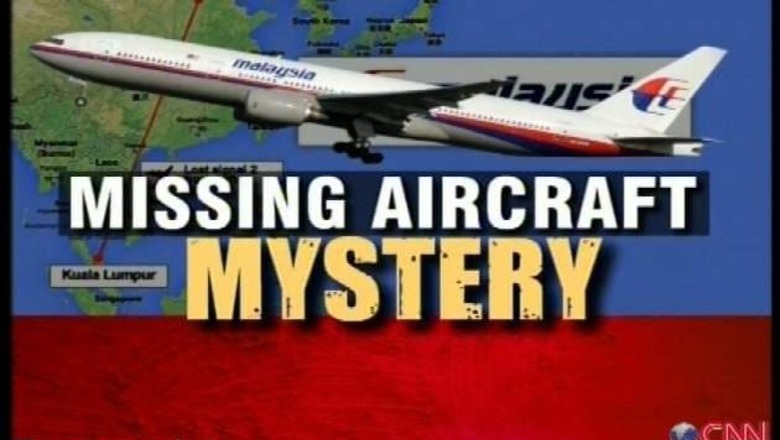
views
Kuala Lumpur: Six months after Malaysia Airlines Flight MH370 with 239 people on board disappeared in the Indian Ocean, aviation experts are still clueless over the world's greatest aviation mystery. Australia, which is responsible for search and rescue operations, is set to launch a new phase of the multimillion dollar search, in an area about 1,800 km off its west coast.
Australian Prime Minister Tony Abbott on Saturday said that an intensified underwater search for missing Flight MH370 will start in about two weeks' time. Abbott said the hunt for the jet which veered off its Kuala Lumpur-Beijing route on March 8 with 239 people aboard, including five Indians and one Indian-origin Canadian, would continue for as long as necessary.
Abbot said that the new phase of the search would begin "in about a fortnight's time", in addition to ongoing mapping through a sonar survey. "(The underwater search) will utilise the best available technology. It will last as long as it needs to scour the seabed," he told reporters here after talks with his Malaysian counterpart Najib Razak.
Last month, Australian Deputy Prime minister Warren Truss said that the undersea hunt for missing plane will now focus on the southern part of the Indian Ocean after a new clue suggested that the jetliner may have turned south earlier than previously believed.
Truss said details about the failed satellite call is now being used to refine the suspected final path of the plane. Australia has estimated a year-long underwater search will cost $48 million.
The search operation, described by Australian officials as the largest in history, has so far turned up no debris from the plane. Investigators do not know what happened to the flight and finding its "black box" flight recorders is seen as key to understanding the factors behind its disappearance. Last week, investigators said they have discovered "hard objects" on the Indian Ocean seabed that seem inconsistent with their surroundings.
Fresh mapping of the MH370 search area has detected the objects with satellite-tracking data and flight-simulation analysis. The Times newspaper reported that Martin Dolan of the Australian Transport Safety Bureau said new surveys of the seabeds had revealed the interesting findings, even if it was possible they were rock formations.
Dolan said, "there is nothing that has screamed out and said 'I look like an aircraft'."
"It's still a hell of an area. The area is horribly, horribly complicated." The search for the remains of the plane and the people on board remains primarily focused on a 60,000-square-km area. Australia recently awarded a contract to Dutch engineering firm Fugro to search the sea floor, and the company is already conducting a detailed underwater mapping of the search area, along with a Chinese naval vessel.
Meanwhile, the Malaysian-led international investigation continues to search for any possible mechanical problems - which might have led pilots to divert the plane - and potential "human factors" among the crew. They have described these as hijack, sabotage, and personal or psychological problems.


















Comments
0 comment